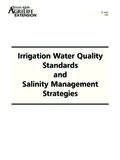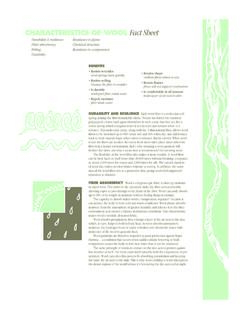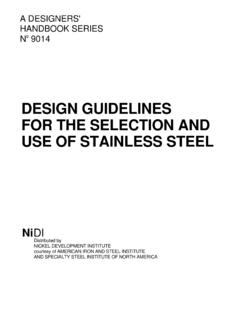Transcription of EXPERIMENT #9 CORROSION OF METALS
1 EXPERIMENT #9 CORROSION OF METALS Objective The objective of this EXPERIMENT is to measure the CORROSION rate of two different METALS and to show the effectiveness of the use of inhibitors to protect METALS from CORROSION . Background The importance of CORROSION can be seen in daily life. CORROSION causes accidents in industry, on highways, and in homes. It is wasteful financially, costing industrialized nations 4-5% of their gross domestic products annually. A little knowledge of electrochemistry, material science and CORROSION could save nations some 25% of this loss.
2 CORROSION engineering is the application of science and art to prevent or control CORROSION damage in a safe and economical manner. To perform this function properly, the CORROSION engineer must rely on experimental research. This is because the major aspects of CORROSION engineering are largely empirical in nature. A body of theory exists that can be very helpful in solving CORROSION problems, but in the final analysis, most decisions are based on the results of empirical tests. CORROSION tests are conducted for a number of reasons including: 1.
3 Establishing CORROSION mechanisms. 2. Defining CORROSION resistance of materials and how to develop new CORROSION resistant alloys. 3. Estimating service life of equipment. 4. Developing CORROSION protection processes. 5. Defining the critical potential values for materials in various environments. Theory Anodes and Cathodes: In analyzing CORROSION , the first thing that must be determined is whether a metal reacts with its environment. If so, the nature of the reaction must be understood. It is generally accepted that CORROSION processes are caused by the formation of electrochemical cells.
4 The electrochemical reactions in these cells can be divided into two reactions: 1. Anodic reactions 2. Cathodic reactions where each reaction is called a half-cell reaction. In the anodic reaction, metal goes into solution as an ion. The reaction is generally written as: M --> Mn+ + ne- where M is a metallic element, e- is an electron and n is the valence of the metal as an ion. An example of this is Zinc where: Zn --> Zn2+ + 2e- In the cathodic reaction, electrons provided by the anode, flow through the metal until they reach the cathode where they can be combined with positively charged ions.
5 In acidic solutions this reaction is: 2H+ + 2e- --> 2H --> H2(gas) and in neutral solutions the reaction is: O2 + 2H2O + 4e- --> 4OH- Both the anodic and cathodic reactions must occur simultaneously for a CORROSION process to proceed. If both reactions are not occurring then a charge builds up and the CORROSION process stops. The anodic reaction is generally the simple case of a metal going into solution. However a variety of cathodic reactions are encountered depending on the conditions of the process involved. Table 1 shows several examples of different cathodic reactions.
6 Note that in all of the cathodic reaction electrons are absorbed. Table 1 - POSSIBLE CATHODE REACTIONS IN DIFFERENT GALVANIC CELLS Cathode Reaction Example 2H+ + 2e- --> 2H Acid Solutions O2 + 2H2O + 4e- --> 4OH- Neutral and alkaline solutions O2 + 4H+ + 4e- --> 2H2O Using both O2 and H+ in acid solutions M3+ + e- --> M2+ When Ferric ions are reduced to ferrous M2+ + 2e- --> MO When iron is placed in a Cu salt solution the electron from solution of the
7 iron reduces Cu ions to metallic Cu The electrode potential in the electrochemical cell When an ideal metal is placed in an electrolyte, an electrode potential develops that is related to the tendency of the material to give up electrons. To measure this tendency, we measure the potential difference between the metal and a standard electrode using a half-cell. The standard reference electrode is a half cell with a known constant potential.
8 Different standard reference electrodes are used depending on the solution environment. Some standard electrodes are the standard hydrogen electrode (SHE) and the saturated calomel electrode (SCE). Standard expressions for CORROSION rate In most cases, aside from contamination problems, the primary concern where CORROSION is present, is the life (usually in years) of METALS in question. A good CORROSION rate EXPERIMENT should include: 1. Familiar units. 2. Easy calculations with a minimum opportunity for errors. 3. Ready conversion of data to life in years.
9 4. Penetration. 5. Whole numbers without cumbersome decimals. Mils penetration per year (mpy) is the most commonly used CORROSION rate expression in the United States. One formula used to calculate the CORROSION rate is: 534 x W mpy = D x A x T where, W = weight loss (gms) D = density of the specimen, g/cm3 A = area of specimen, sq. in. T = exposure time, hr. The CORROSION rates of resistant materials generally range between 1 and 200 mpy. The relative CORROSION resistance of a material can be evaluated using the following criteria: Relative CORROSION Resistance mpy outstanding <1 excellent 1-5 good 5-20 fair 20-50 poor 50-200 unacceptable >200 Consider a car engine block with and without the addition of antifreeze, as an example of a CORROSION rate problem.
10 Engine blocks are generally made from low carbon steel that corrodes when exposed to tap water. This is the brown rust that is often seen in cooling systems containing water only. The CORROSION reactions for low carbon steel are: Fe --> Fe2+ + 2e- Fe2+ --> Fe3+ + e- O2 + 2H2O + e- --> 4OH- 2Fe + 2H2O + O2 --> 2Fe2+ + 2OH- --> 2Fe(OH)2 2Fe(OH)2 + H2O + 1/2 O2 --> 2Fe(OH)3 (rust) The electrochemical technique is used to study the CORROSION rate of low carbon steel in tap water instead of using the weight loss technique.


















